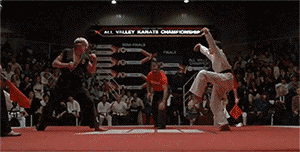
Been there, right?
As a long-time teacher at a liberal arts college, and as a friend and colleague of loads of teachers at colleges and universities, I’m pretty sure I’m not going out on a limb here when I assert three truisms about the tension between the typical teaching philosophy and the typical teaching practice:
- Teaching students to think critically is central to our mission;
- We lament that our students frequently demonstrate that they can’t do it;
- However, most of us frequently wonder (and even worry) that we’re not actually teaching them to think critically.
This, clearly, is a quandary. Some of our fields have built-in or disciplinary practices or pedagogies that center on critical thinking. Others may not. And the related and growing emphasis on “creative thinking” can be even more elusive… can creativity actually be taught?
This brief yet helpful piece recently shared on the tomorrows-professor e-mail list (have you subscribed yet???) might be useful for you to start tackling this quandary. Rebecca Brent from the ASEE National Effective Teaching Institute and Richard M. Felder from North Carolina State University (2014) published this piece in Chemical Engineering Education, 48(2), 113-114. Rick Reis from tomorrows-professor also suggests that you check out Felder’s website at http://www.ncsu.edu/effective_teaching.
So, let’s stop lamenting and start these folks thinking!
______________________________________________________________________
Thinking Creatively and Critically
Want Your Students to Think Creatively and Critically? How About Teaching Them?
Ever hear a conversation like this in your department?
Professor X: “All these students can do is plug numbers into formulas-give them a problem a little different from the one in the text and they’re helpless.”
Professor Y: “Yeah, and they’re also functionally illiterate-most of them couldn’t write a coherent grocery list. On a quiz last month I asked for a clear and grammatically correct definition of vapor pressure, and a bunch of the students stomped me for it on the midterm evals. “I went into engineering to get away from this crap,” one of them said.
Professor Z: “It’s this whole spoiled generation-they want the grades but don’t want to do anything for them!”
If you haven’t heard anything like that, you haven’t been listening.
Two popular targets on the list of Things These Students Can’t Do are creative thinking (coming up with innovative ideas) and critical thinking (making judgments or choices and backing them up with evidence and logic). When our colleagues complain to us that their students can’t do them, after we make appropriate sympathetic noises we ask, “Where were they supposed to learn to do it?” The answers may vary, but one we rarely hear is “In my class.”
Leaving aside anomalous prodigies like Mozart and Gauss, people develop skills of any kind — musical performance or composition, math or physics, critical or creative thinking — through practice and feedback. That’s how you acquired your skills. You were either given or voluntarily took on tasks, and with someone else’s help or on your own you learned how to do them. The more you did them, the better you got. Unfortunately, creative and critical thinking are not routinely taught in our schools, nor are they activities that students eagerly learn on their own. It shouldn’t surprise us when our students can’t magically do them on our assignments and exams.
Let’s suppose you decide to take on the job of helping your students learn to think creatively or critically. Can you equip all of them to be brilliant at it? No, any more than you or anyone else can turn them all into brilliant scientists and engineers-they don’t all have the talent. How about the ones who have it-can you do it for all of them? Probably not — some lack the motivation to do the required work. Well then, can you help the talented and motivated students become much better at creative and critical thinking than they were at the beginning of the course? Definitely! How? Easy — show them examples of the kind of thinking you have in mind; ask them in class and in assignments to complete tasks that require that kind of thinking; give them feedback; and repeat.



